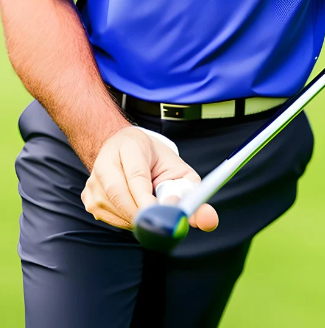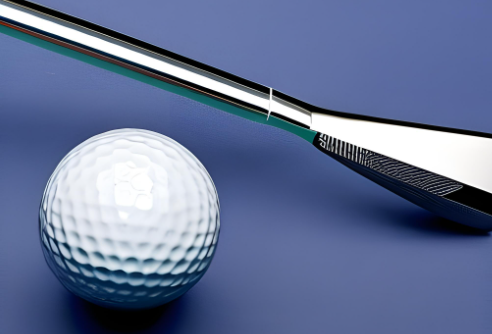How to Measure the Length of a Golf Club

The game of golf requires a high level of accuracy, and the choice of equipment is one of the most important factors in determining how well a player does. The golf club is a good illustration of one such piece of equipment that is absolutely necessary. It is necessary to take an exact measurement of the length of a golf club in order to verify that it is compatible with your height, swing style, and current level of competence. The length of a golf club may be correctly measured by following the steps outlined in this article, which will give step-by-step guidance.
Contents
- 1 Why is Measuring Golf Club Length Important?
- 2 Understanding Golf Club Anatomy
- 3 Tools Needed to Measure the length of a golf club
- 4 Step-by-Step Guide to Measure a Golf Club
- 5 Golf Club Measurement Standards
- 6 Adjusting Golf Club Length
- 7 The Importance of Measuring Golf Club Length for Custom Fitting
- 8 Common Mistakes to Avoid When Measuring Golf Club Length
- 9 Measuring the Length of a Fairway Wood Golf Club Properly
- 10 Tips for Measuring the Length of a Hybrid Golf Club
- 11 The Role of Club Length in Golf Swing Dynamics
- 12 Measuring the Length of a Golf Club Without a Ruler or Tape Measure
- 13 Seeking Professional Assistance for Accurate Golf Club Length Measurement
- 14 FAQs on How to measure the length of a golf club
- 15 Conclusion
- 16 Trending Now
Why is Measuring Golf Club Length Important?
Before diving into the process, let’s understand why it’s essential to measure a golf club’s length. The club’s length can significantly impact your golf game, affecting swing speed, accuracy, and overall performance. A club too short may limit your distance, while a club too long can lead to inaccurate shots. Hence, knowing the exact length of your golf club is vital to making necessary adjustments and improving your game.
Understanding Golf Club Anatomy
To measure a golf club correctly, one must understand its anatomy. A golf club comprises three main parts:
- Grip: The top part of the club that players hold.
- Shaft: The long, slender piece that connects the grip and the club head.
- Clubhead: The bottom part of the club that hits the ball.
The length of a golf club is determined by measuring it from the bottom of the club head to the point where the grip terminates.
Tools Needed to Measure the length of a golf club
To measure a golf club, you will need the following:
- A 48-inch ruler or a measuring tape.
- A flat surface or floor.
- A wall or vertical surface.
Step-by-Step Guide to Measure a Golf Club
Step 1: Preparation
Place the golf club on a flat surface, ensuring the sole of the clubhead lies flat against the surface. The club should be in a position as if it were about to hit a ball. The shaft should be extended towards a wall or vertical surface.
Step 2: Position the Ruler
Place the ruler or measuring tape along the backside of the club, ensuring it’s in line with the shaft and touches the point where the grip and shaft meet. The ruler should be resting against the same vertical surface towards which the shaft is extending.
Step 3: Measure the Club Length
The length of the club is determined by measuring it from the top of the grip down the backside of the shaft all the way down to the bottom of the club head. This distance is determined by measuring along the rear of the club. The measurement should be taken, and the results should be recorded to the nearest 1/8 of an inch.
Golf Club Measurement Standards
It’s essential to note that there are standard lengths for different types of golf clubs. For instance, a standard men’s driver is typically 45 inches, and a standard women’s driver is around 44 inches. Irons decrease in length in 0.5-inch increments, with the longest 3-iron usually measuring 39 inches for men and 38 inches for women. Knowing these standards can help you decide if your clubs are the right length for you.
Adjusting Golf Club Length
If your golf club isn’t the right length, don’t panic. Club fitting professionals can adjust the length by either trimming the shaft (to shorten the club) or adding an extension (to lengthen the club). It’s important to consult with a professional for these adjustments to ensure the changes don’t affect the club’s balance and swing weight.
The Importance of Measuring Golf Club Length for Custom Fitting

When it comes to optimizing your golf game, custom-fitting your clubs is essential, and one critical aspect of this process is measuring the golf club’s length. The length of your golf clubs directly impacts your swing mechanics, ball contact, and overall performance. Here’s why measuring golf club length is crucial for custom fitting:
- Consistent Swing Mechanics: Proper club length ensures that you can maintain a consistent and repeatable swing. Clubs that are too long or too short can disrupt your swing plane, leading to inconsistent ball striking and loss of control.
- Comfort and Confidence: Clubs fitted to the correct length promote comfort and confidence during your swing. When you have the right-sized clubs in your hands, you can focus on your technique and execute shots with greater ease.
- Distance and Accuracy: The length of the club affects the clubhead speed and the timing of your swing. A well-fitted club length allows you to generate maximum clubhead speed, leading to increased distance and improved accuracy.
- Proper Posture and Alignment: The length of your golf clubs influences your posture and alignment at the address. A club that is too long or short may force you into unnatural positions, affecting your balance and alignment with the target.
Common Mistakes to Avoid When Measuring Golf Club Length
When measuring golf club length, it’s crucial to avoid common mistakes that can lead to inaccurate results. Here are a few common errors to be aware of:
- Inconsistent Measuring Techniques: Using different measuring techniques or tools can lead to inconsistent measurements. Stick to one method consistently for accurate results.
- Neglecting Grip Thickness: Remember to consider grip thickness when measuring club length. Different grip thicknesses can affect how the club feels and performs in your hands.
- Ignoring Player Preference: While measurements provide a starting point, it’s important to consider player preference and comfort. Some golfers may prefer slightly longer or shorter clubs based on their swing style and personal preference.
- Incorrect Measurement Starting Point: Ensure you measure from the correct starting point when measuring club length. The starting point is typically the end of the club’s grip, not the clubhead.
Measuring the Length of a Fairway Wood Golf Club Properly
The fairway woods in your set are a crucial part of your golf game, so it’s important to get their length just right. For precise measurement of your fairway wood, use these methods:
- Put the club down so that the sole is touching the ground and the grip is facing up.
- Align the bottom edge of the grip with the ruler or tape measure and set it flush against the shaft.
- Determine how far away the ground is from the base of the grip using a measuring tape.
- Record the measurement in inches or centimeters.
Tips for Measuring the Length of a Hybrid Golf Club
Hybrid golf clubs combine the characteristics of irons and fairway woods, and measuring their length accurately is essential for proper fitting. When determining the length of hybrid clubs, keep the following in mind:
- In the same manner that you would measure a fairway wood, place the club down on a level surface so that the sole is in contact with the ground and the grip end is facing in the other direction.
- To determine the distance between the bottom edge of the grip and the floor, measure using a ruler or tape measure.
- Note the inch/centimeter measurement.
The Role of Club Length in Golf Swing Dynamics
Club length directly impacts the dynamics of your golf swing. Here’s how club length affects your swing mechanics:
- Swing Plane: The length of the club influences your swing plane, which is the path the clubhead follows during the swing. Properly fitted club length promotes a natural swing plane, leading to more consistent ball striking.
- Timing and Tempo: Club length affects the timing and tempo of your swing. Longer clubs may require a slower tempo, while shorter clubs may require a slightly quicker tempo to maintain proper timing.
- Distance and Control: The club length affects the leverage and speed generated during your swing. Longer clubs can provide more distance but may sacrifice control, while shorter clubs offer more control but may limit distance potential.
Measuring the Length of a Golf Club Without a Ruler or Tape Measure

If you find yourself without a ruler or tape measure, there are alternative methods to measure the length of a golf club:
- Use Your Body as a Reference: If you have a standard-sized putter, you can compare the lengths of other clubs by aligning them with your body. For example, hold the putter against your leg and use it as a reference to estimate the length of other clubs.
- Use Known Measurements: If you have a known reference length, such as the distance between your elbow and wrist, you can use that measurement as a guide to estimate the length of the club.
While these methods are not as precise as using a ruler or tape measure, they can provide a rough estimate of club length in situations where measuring tools are not available.
Seeking Professional Assistance for Accurate Golf Club Length Measurement
For the most accurate and reliable golf club length measurement, it is recommended to seek professional assistance. A club-fitting professional or golf instructor will have the necessary tools and expertise to measure your clubs accurately. They can consider various factors, including your swing dynamics, body measurements, and playing goals, to provide you with customized club length recommendations for optimal performance on the course.
FAQs on How to measure the length of a golf club
Why is it important to measure the length of a golf club?
The length of a golf club significantly affects your game, including swing speed, accuracy, and overall performance. A short club limits distance, whereas a large club causes imprecise strokes. Because of this, knowing the precise length of your golf club may assist you in making the required modifications to your game in order to enhance it.
What are the standard lengths for different types of golf clubs?
Standard lengths vary based on the type of golf club and the player’s gender. For instance, a standard men’s driver is typically 45 inches, while a standard women’s driver is approximately 44 inches. Irons decrease in length in 0.5-inch increments, with the longest 3-iron usually measuring 39 inches for men and 38 inches for women.
What tools do I need to measure a golf club accurately?
You will need a 48-inch ruler or a measuring tape, a flat surface or floor, and a wall or vertical surface to measure a golf club accurately. The club’s length is measured from the grip to the club head along the shaft’s back.
Can a golf club be adjusted if it is not the correct length?
Yes, a club fitting professional can adjust the length of a golf club by either trimming the shaft (to shorten the club) or adding an extension (to lengthen the club). It is essential to get the advice of an expert in order to confirm that the modifications will not interfere with the club’s balance or swing weight.
Can use an incorrectly sized golf club lead to injury?
Yes, using a golf club that is not correctly sized for you can lead to poor posture and even repetitive strain injuries over time. Ensuring your clubs are the correct size for you is a critical step towards preventing injury and improving your golf game.
Conclusion
The length of a golf club should be accurately measured so that the player is not only able to maximize their performance but also maximize their comfort and minimize their risk of injury. Playing with incorrectly sized clubs can lead to poor posture and even repetitive strain injuries over time. By taking the time to measure your clubs and ensure they are the correct size for you, you’re taking a critical step towards improving your golf game and your overall enjoyment of this wonderful sport.









